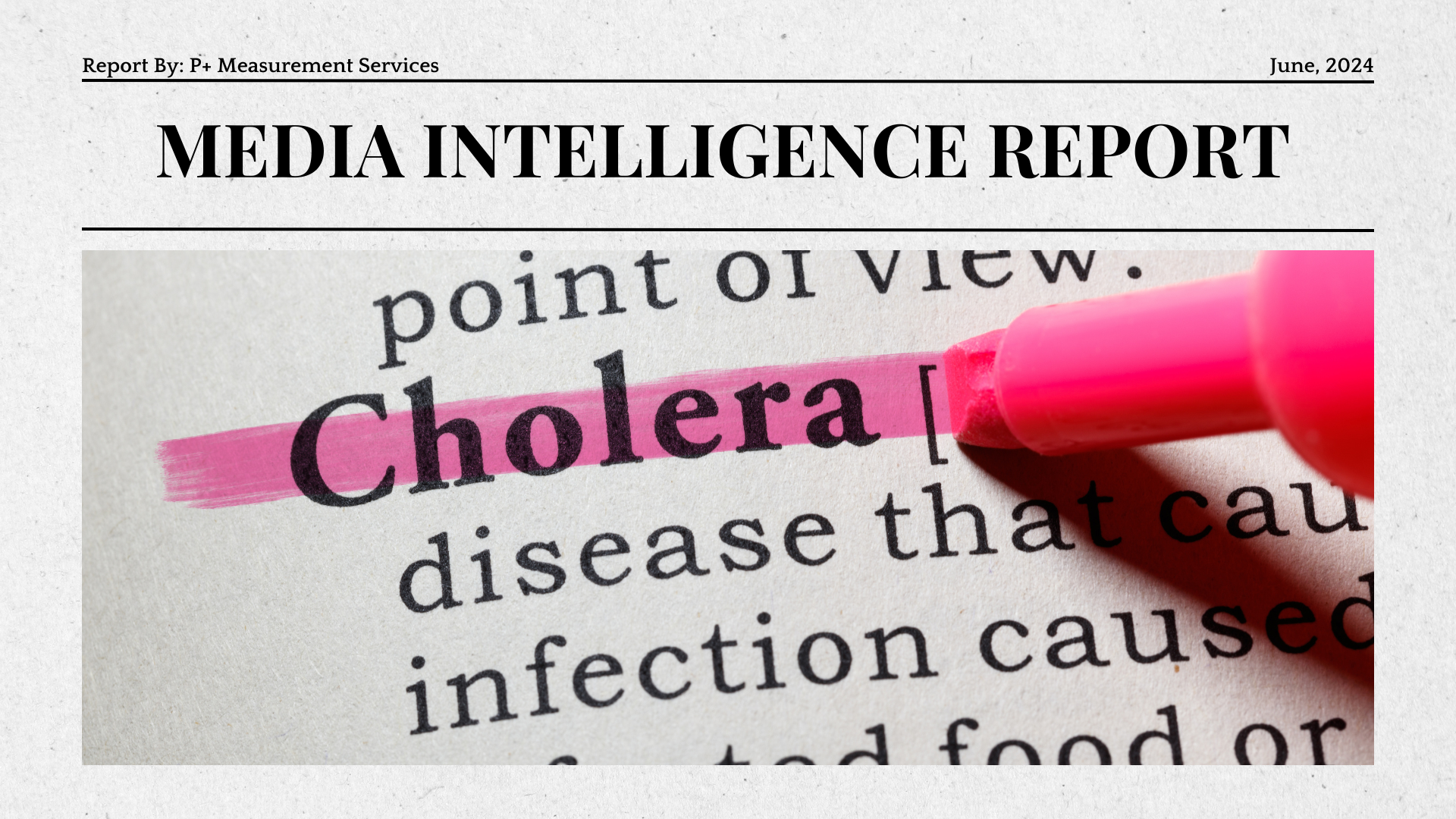Headlines
Nigeria And The Burden Of Cholera Outbreak: June 2024 Overview

In June 2024, Nigeria faced a major cholera outbreak, with the Nigeria Centre for Disease Control and Prevention (NCDC) reporting 1,539 suspected cases and 54 deaths across 17 states. The outbreak significantly impacted various regions, underscoring severe public health challenges and the urgent need for targeted interventions to curb the disease’s spread.
Media data analyzed by Nigeria’s leading media intelligence agency, P+ Measurement Services, reveals that Lagos, Bayelsa, and Abia were the hardest hit, representing 35%, 30%, and 7% of the total cases, in June 2024, respectively.
Lagos, Nigeria’s most populous city, recorded the highest number of cases with 537, highlighting the difficulty of containing cholera in densely populated urban settings. Bayelsa followed with 466 cases, pointing to substantial public health challenges in the area.
States such as Zamfara, Bauchi, and Katsina reported fewer cases, with Zamfara documenting 64 cases (4%), Bauchi 46 cases (3%), and Katsina 45 cases (3%). Despite the lower numbers, these regions continue to face significant health challenges requiring urgent attention.
Regions like Cross River, Ebonyi, Rivers, and Delta also recorded significant, though smaller, numbers of cholera cases, each accounting for approximately 2-3% of the total. Cross River reported 43 cases, Ebonyi 38, Rivers 37, and Delta 34. This widespread impact, affecting both urban and rural areas, highlights the extensive reach of the epidemic.
States with minimal impact included Ogun, Nasarawa, Ondo, Kano, Niger, and Osun, each contributing 1% or less of the total cases. Specifically, Ogun reported 21 cases, Nasarawa 19, Ondo 17, Kano 13, Niger 11, and Osun 11. These states were more effective in containing the outbreak, but the occurrence of any cases underscores the need for ongoing vigilance and preventive measures.
The cholera outbreak in Nigeria garnered significant media attention, spanning both print and online news channels. Notably, 21% of the reports were found in traditional print media, emphasizing the outbreak’s severity and impact through in-depth articles and feature stories.
Meanwhile, a substantial 79% of the coverage is present on online platforms, where near real-time updates and widespread dissemination of information ensure the public remains informed about the latest developments and preventive measures. This comprehensive media presence underscores the urgency and widespread concern surrounding the cholera crisis.

Sentiment analysis of media coverage revealed a diverse range of public reactions. Positive sentiment accounted for 24% of the coverage, highlighting efforts towards containment, successful treatments, and community resilience. Neutral sentiment, comprising 25%, reflects factual reporting of the outbreak’s progression, statistical updates, and official statements.
Negative sentiment makes up 51% of the coverage, focusing on the challenges, rising number of cases, healthcare system struggles, and criticisms of response efforts, emphasizing ongoing struggles and areas needing improvement. This range of sentiments illustrates the complex and multifaceted impact of the outbreak on public perception, capturing both progress made and challenges remaining.
The widespread cholera outbreak across 31 states and 107 Local Government Areas (LGAs) highlights the critical need for comprehensive public health strategies. Extensive media coverage in Lagos and Bayelsa emphasizes the urgent requirement for improved sanitation, access to clean water, and effective healthcare responses to mitigate the impact of such outbreaks in the future.

















